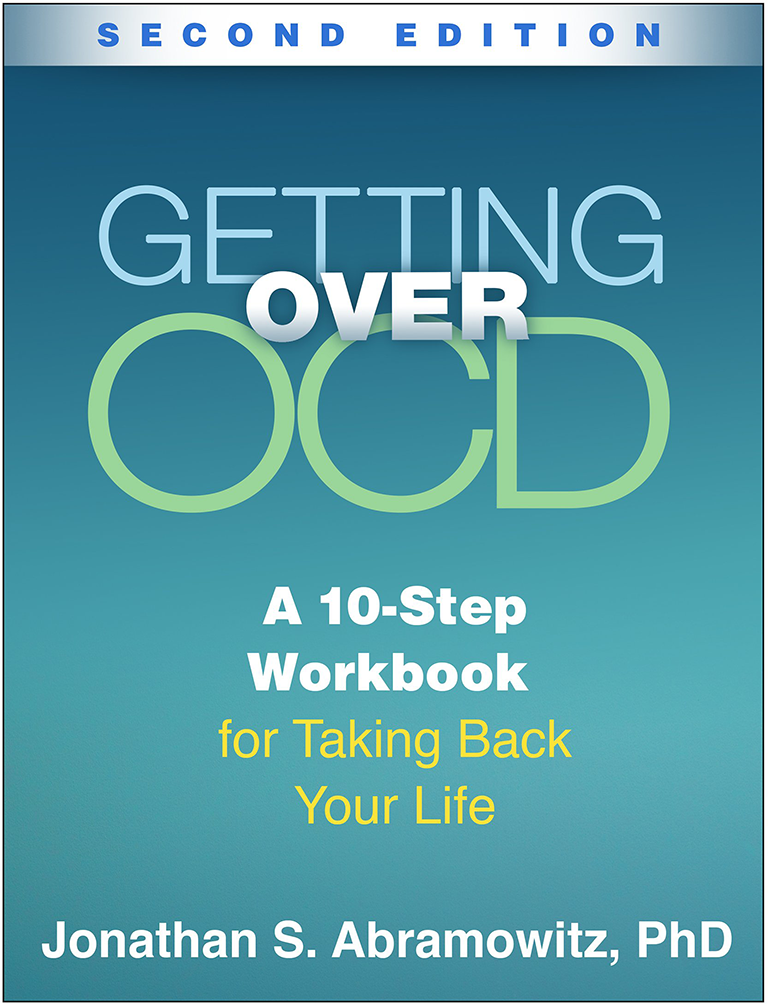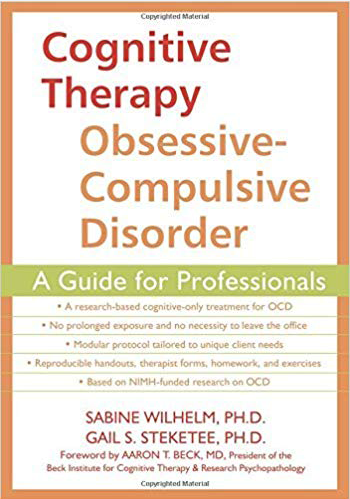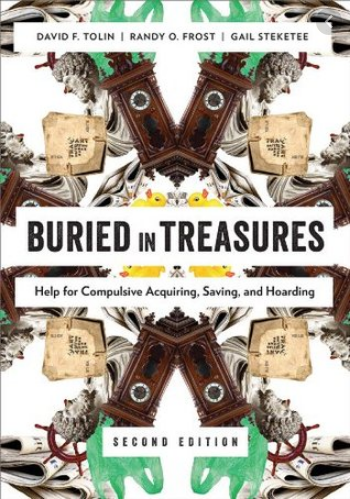Information about Obsessive Compulsive Disorder and Related Disorders
Through the Life Span
Obsessive Compulsive Disorder (OCD) is the fourth most common mental disorder and among the ten leading causes of medical disability world-wide (World Health Organization, 1999). Combined prevalence of OCD and related disorders in children, adolescents, and adults is estimated to be approximately 5% of the general population. OCD is associated with severe emotional suffering and can seriously affect every aspect of the sufferer’s life: ability to attend school or work, self-care and care of loved ones, family and interpersonal relationships, quality of life, and utilization of mental health resources.
Effective specialized and timely treatment is required to avoid unnecessary suffering and progression to disability. Phenomenological, neurobiological, genetic, and treatment outcome research indicates that OCD is distinct from anxiety and other disorders in terms of psychopathology and treatment requirements.
Common Examples of OCD Symptoms:
Individuals suffering from OCD commonly report combinations of symptoms. Some individuals report excessive fear of illness with compulsions to excessively wash or to bath in order “to feel clean”. Excessive washing can also be associated with the feeling that others or one’s own bodily secretions are “contaminated” or “disgusting” without fear of illness. Other OCD sufferers report a sense of excessive responsibility for harm associated with checking to prevent feared disasters such as fire or flood. Preoccupation with symmetry, order, or exactness is commonly associated with re-arrangement of objects and other rituals until the individual feels “just right” or “complete”.
Difficulty with over-importance and over-control of thoughts may be associated with cognitive rituals such as replacing a thought perceived as “bad” or harmful with a thought perceived as “good”. “Magical thinking” and “thought-action fusion” involve unrealistic beliefs that simply having specific images or thoughts can increase the actual occurrence of specific dreaded events. “Emotional reasoning” means that feelings are perceived as evidence: “ If I feel anxious, there must be danger.” (Arntz, Rauner, & van den Hout, 1995).
Approximately 25% of individuals with OCD report obsessions and cognitive rituals without overt behavioral ritualization. The content of distressing obsessions, images, or urges varies widely and often involves themes of harm, religion, aggression, or sex. For example, children may experience difficulty in attending school secondary to intrusive images of their parents falling ill or being in an accident.
Most individuals retain insight that their fears are excessive, but nonetheless feel unable to resist cognitive or behavioral ritualization that perpetuates and exacerbates this disorder.
O-C Related Disorders include Trichotillomania and Body Dysmorphic Disorder. Individuals suffering from Body Dysmorphic Disorder (BDD) report dissatisfaction and preoccupation with specific aspects of their physical appearance, interpersonal sensitivity, discomfort, and avoidance, and checking behaviors (Phillips, 2005). Severe BDD may result in requests for unnecessary surgeries. Hoarding Disorder (Mataix-Cols, et al., 2010) involves difficulty discarding and excessive accumulation of possessions that in severe cases may require involvement by city or fire departments to address health or fire hazard.
Treatment for OCD:
Treatment for OCD is a specialized field. Evidence based guidelines indicate that first line treatment for children, adolescents, and adults suffering from OCD is specialized cognitive behavior therapy (CBT), with the essential interventions of exposure and response prevention (ERP): exposure (facing the fear) combined with response prevention (not doing compulsions to relieve distress).
Specialized cognitive therapy strategies have been developed to address symptom related difficulties characteristic of OCD, such as beliefs about importance and the need to control thoughts, overestimation of threat, perceived vulnerability, excessive sense of responsibility, need for certainty, intolerance of feelings of distress or disgust, fear of risk taking, and safety behaviors.
Cognitive therapy aims to help the person suffering from OCD to adaptively respond to distressing thoughts and feelings, to resist urges to carry out cognitive and behavioral rituals, and to reduce avoidance of feared situations. These strategies aim to improve the individual’s capacity to collaborate with specialty protocol “behavioral experiments” and/or ERP administered in the therapist’s office and in real life situations such as home and work (e.g., Wilhelm & Steketee, 2006).
A variety of specialty strategies for OCD symptom subtypes (e.g., washing, checking, obsessions only, etc.,) are available to create new learning experience, to identify and reappraise unrealistic thoughts and fears, to modify the meanings to the person of his/her inner experiences from threatening to benign (Bream, Challacombe, Palmer, and Salkovskis 2017), to practice new skills, and to increase self-confidence and resilience.
Specialized CBT interventions for OCD refer to the content, process, duration, and location (e.g., “naturalistic”) of multiple specialized interventions that address specific OCD subtype characteristics, and that are distinctive from CBT interventions developed for anxiety disorders or for other disorders (e.g., Sookman, 2016).
Controlled research has found that specialized CBT is equally effective compared with CBT plus medication, and has greater and more sustained efficacy compared with medication alone (e.g., Simpson et al., 2008, 2013). Relapse rate following discontinuation of medication alone is higher compared with CBT combined with medication. However, medication can be very helpful and is required for many individuals in combination with specialized CBT. Serotonin reuptake inhibitors (SSRI) are the first line pharmacotherapy of choice for OCD.
For additional information about OCD please see brochure PDF ![]() .
.
Whenever possible OCD should be treated by a clinician experienced with the treatment of OCD or in a specialized OCD Center where expertise and resources focus on this disorder. This is generally the case regardless of age, severity or subtype of symptoms, or presence of co-morbid difficulties.
Clinical research indicates that for many individuals the prognosis for OCD following specialized treatment is excellent. Important indications of successful treatment are that the individual has been able to participate in exposure and response prevention, no longer ritualizes, does not engage in O-C related avoidance, and has learned alternate adaptive cognitive, emotional, and behavioral strategies to cope with inner and external events previously perceived as threatening. Criteria for assessment of symptom recovery following treatment have been proposed (e.g., Sookman & Steketee, 2010, Mataix-Cols et al., 2016).
The above information refers to OCD in general. Consultation with the individual’s own doctor, who may recommend referral to an OCD expert, is required to assess the treatments indicated for each individual.
Debbie Sookman, Ph.D., November, 2023.
Abramowitz, J. (2018). Getting Over OCD, Second Edition, A 10-Step Workbook for Taking Back Your Life. Guildford Press.
Abramowitz, J. S. (2021). The family guide to getting over OCD: Reclaim your life and help your loved one. Guilford Publications.
Arntz, A., Rauner, M., & van den Hout, M. (1995). “If I feel anxious, there must be danger”: Ex-consequentia reasoning in inferring danger in anxiety disorder. Behaviour Research and Therapy, 33, 917-925.
Alcolado, G. M., & Radomsky, A. S. (2015). A novel cognitive intervention for compulsive checking: Targeting maladaptive beliefs about memory. Journal of Behavior Therapy and Experimental Psychiatry, 53, 75–83.
Bream, V., Challacombe, F., Palmer, A., and Salkovskis, P. (2017). Cognitive Behaviour Therapy for Obsessive-compulsive Disorder. Oxford University Press.
Craske, M. G., Treanor, M., Conway, C. C., Zbozinek, T., & Vervliet, B. (2014). Maximizing exposure therapy: an inhibitory learning approach. Behaviour research and therapy, 58, 10-23.
Drummond, L. M., & Edwards, L. J. (2022). Everything you need to know about OCD. Cambridge University Press.
Leahy, R. (2020). Don’t believe everything you feel. New Harbinger Publications, Inc.
Mataix-Cols, D., Frost, R. O., Pertusa, A., Clark, L. A., Saxena, S., Leckman, J. F., Stein, D. J., Matsunaga, H., Wilhelm, S. (2010). Hoarding Disorder: A new diagnosis for DSM-V?, Depression and Anxiety, 27, 556-572.
Phillips, K. A. (Editor). Body Dysmorphic Disorder: Advances in Research and Clinical Practice. New York, NY: Oxford University Press, 2017.
Phillips K. A. (2017). The obsessive-compulsive and related disorders: A new category in DSM5. In C. Pittenger (Ed.), Obsessive-Compulsive Disorder: Phenomenology, Pathophysiology, and Treatment. New York, NY: Oxford University Press.
Pietrefesa, A. S., Schofield, C. A., Whiteside, S. P., Söchting, I., & Coles, M. E. Obsessive beliefs in youth with OCD and their mothers (2010). Journal of Cognitive Psychotherapy: An International Quarterly, V. 24(3), 187-197.
Söchting, I. (2014). Cognitive Behavioral Group Therapy: Challenges and Opportunities.
John Wiley and Sons, Ltd.
Sookman, D. (2016). Specialized cognitive behavior therapy for Obsessive Compulsive Disorder: An expert clinician guidebook, Routledge.
Sookman, D. (2018). Specialized Cognitive Behavior Therapy for Obsessive Compulsive Disorder, In Science and Practice in Cognitive Therapy: Foundations, Mechanisms, and Applications. (Ed. Robert Leahy), Guilford, pp. 335-357.
Sookman, D., Phillips, K. A., Mataix-Cols, D., Veale, D., (2021). Introduction to knowledge and competency standards for specialized treatments for obsessive-compulsive disorder throughout the lifespan: phase two series by the International Accreditation Task Force of The Canadian Institute for Obsessive Compulsive Disorders (CIOCD, www.ciocd.ca). Psychiatry Res., 298. 113753. https://doi.org/10.1016/j.psychres.2021.113753.
Tolin, D., Steketee, G., and Frost, R. (2014). Buried in Treasures: Help for compulsive acquiring, saving, and hoarding. Second Edition, Oxford University Press.
Wilhelm, S., Phillips, K. A., and Steketee, G., (2012). Cognitive-Behavioral Therapy for Body Dysmorphic Disorder: A Treatment Manual, The Guilford Press.
Wilhelm, S. and Steketee, G. (2006). Cognitive therapy of obsessive-compulsive disorder: A guide for professionals. Oakland, CA: New Harbinger.
Veale, D, and Gilbert, P. (2014). Body Dysmoprhic Disorder: the functional and evolutionary context and a compassionate mind. Journal of Obsessive Compulsive and Related Disorders, 3(2): 150–160.
Veale, D., & Willson, R. (2021). Overcoming Obsessive Compulsive Disorder: A self-help guide using cognitive behavioural techniques. Robinson.
Multimedia
DVDs
The Touching Tree













